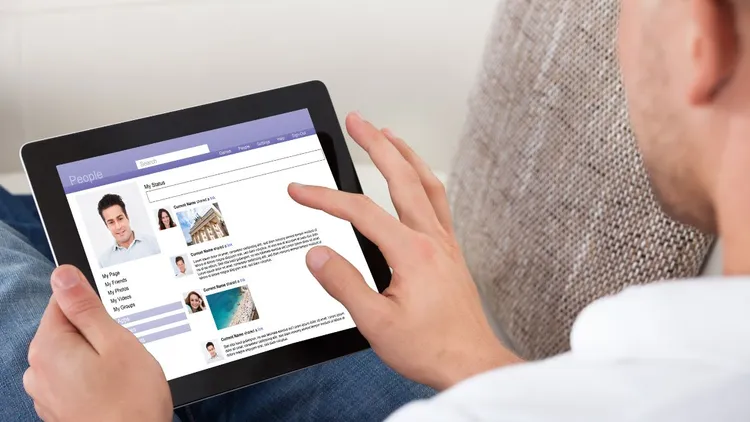

Hey there, future online education guru! Ready to embark on an exciting journey of teaching online courses? Whether you’re aiming to share your expertise through your own website, leverage online teaching platforms, or explore online course marketplaces, you’re in for an exhilarating ride.
This guide is your trusty companion, packed with insights on planning course outcomes, mastering technology, and much more. Let’s dive in!
First things first, decide how you’ll deliver your knowledge. Are you planning to set up shop with a Learning Management System (LMS) on your own website? Or maybe you’re eyeing popular online learning platforms or course marketplaces? Each route has its perks. An LMS gives you control and branding power, while online platforms and marketplaces offer a ready audience.

An LMS allows you to build and manage your courses on your website. Popular choices include:
Each LMS comes with distinct benefits, such as branding control, course customization, and the ability to integrate various educational tools. This route is ideal for those who want a personalized touch in their teaching approach.
The #1 to make money online with TikTok Search (FREE TRAINING)

Platforms like Teach.io stand out when it comes to creating an interactive learning environment. Teach.io, in particular, shines as a platform for building learning communities. Here’s why:
This platform is a match for educators aiming to build a vibrant, interactive learning community where dialogue and collaboration are as integral as the learning material itself.
Online course marketplaces like Udemy or Coursera offer immediate access to a vast audience. They are ideal for those who wish to focus solely on content creation, leaving the marketing and technical aspects to the platform.
Each of these paths – LMS, online platforms, or marketplaces – has unique advantages. Your choice depends on your goals, audience, and the kind of learning experience you want to provide. Whether it’s through the personalized control of an LMS, the community-building focus of platforms like Teach.io, or the wide reach of course marketplaces, your path to successful online teaching is abundant with possibilities.

For online teachers, mastering technology is not just a skill, it’s a necessity. Ensuring a smooth and effective online teaching experience begins with the basics – a reliable internet connection and high-quality video hardware.
This is crucial, especially when teaching styles and learning styles vary. You want every student to have access to the same quality of course material, regardless of where they are or their pace of learning.
In a physical classroom, your presence is your tool. In distance education, your tech setup is your stage. From practicing your voice modulation for clear and engaging delivery, to ensuring your webcam and microphone are top-notch, every element contributes to effective student-teacher interaction. This interaction is vital, as it bridges the gap created by the physical distance in online learning.
Creating course material for online learners goes beyond compiling information. It involves designing content that caters to various learning styles, keeping students engaged and motivated. Incorporating interactive elements like quizzes, embedding real-life examples, and even using humor can make your content more relatable and engaging.
Remember, in online teaching, a bored learner might mean lost revenue if you’re looking to make money online.

One of the challenges in online teaching is fostering a sense of community. Unlike a physical classroom, where interaction is more natural, online classes require deliberate efforts to encourage learner interaction.
This can be achieved by setting up discussion forums, live Q&A sessions, and group activities. Such interactions not only enhance the learning experience but also provide valuable student feedback, which is essential for refining your teaching skills and growing your teaching career.
When thinking about how many students to enroll in your course, consider the balance between personal attention and scalability. Too many students might hamper individual interactions, while too few might not yield that much money. The key is to find a balance that allows for effective teaching and learning, while also being financially sustainable.
In conclusion, for online teachers, mastering technology, creating engaging content, and encouraging student interaction are the pillars of success in the realm of distance education. Whether you’re a seasoned teacher or just starting your teaching career, focusing on these aspects can greatly enhance your ability to teach effectively online, engage diverse learners, and potentially make money online.

As an online teacher, the journey to impart knowledge begins with a clear vision of your course outcomes. Whether you’re gearing up to teach English online, run an online course business, or share expertise in any other field, defining what skills and knowledge you want your learners to gain is paramount. These outcomes are the backbone of your online class structure, influencing every aspect from course materials to interactive online discussions.
When you teach online classes, especially in a diverse online learning environment, your objectives need to be crystal clear. Ask yourself: By the end of this course, what should my students be able to do? This could range from mastering a programming language in a coding class to whipping up a gourmet meal in a cooking tutorial.
Your course materials are the tools with which you build your online classroom. Every video, reading material, and assignment should align with your course outcomes. This alignment ensures that your online class is not just a series of lectures, but a coherent, goal-oriented learning journey.
Thebeauty of the online teaching space lies in its interactive potential. Encourage online discussions, group projects, and peer-to-peer learning to enrich the experience. These interactions not only make learning more engaging but also help reinforce the course outcomes through practical application.
Utilize the technology at your disposal to enhance the learning experience. Interactive quizzes, engaging multimedia content, and virtual reality experiences can transform a standard online class into an immersive learning adventure.

If you’re planning to sell online courses, understanding your target audience’s needs and how your course outcomes meet those needs is crucial. This understanding will not only help in creating compelling content but also in marketing your course effectively.
In summary, when you set out to teach an online course, whether it’s to teach English online or start your own online course business, having well-defined, clear, and achievable outcomes is key. These outcomes not only guide your course materials and teaching strategies but also play a crucial role in how you present and sell your online courses.
Remember, in the dynamic world of online classes, your ability to clearly articulate and achieve your teaching goals can set you apart as an effective online teacher.
In a physical classroom, your presence is your tool. In distance education, your tech setup is your stage. From practicing your voice modulation for clear and engaging delivery, to ensuring your webcam and microphone are top-notch, every element contributes to effective student-teacher interaction. This interaction is vital, as it bridges the gap created by the physical distance in online learning.
Creating course material for online learners goes beyond compiling information. It involves designing content that caters to various learning styles, keeping students engaged and motivated. Incorporating interactive elements like quizzes, embedding real-life examples, and even using humor can make your content more relatable and engaging.
Remember, in online teaching, a bored learner might mean lost revenue if you’re looking to make money online.

One of the challenges in online teaching is fostering a sense of community. Unlike a physical classroom, where interaction is more natural, online classes require deliberate efforts to encourage learner interaction.
This can be achieved by setting up discussion forums, live Q&A sessions, and group activities. Such interactions not only enhance the learning experience but also provide valuable student feedback, which is essential for refining your teaching skills and growing your teaching career.
When thinking about how many students to enroll in your course, consider the balance between personal attention and scalability. Too many students might hamper individual interactions, while too few might not yield that much money. The key is to find a balance that allows for effective teaching and learning, while also being financially sustainable.
For online teachers, mastering technology, creating engaging content, and encouraging student interaction are the pillars of success in the realm of distance education. Whether you’re a seasoned teacher or just starting your teaching career, focusing on these aspects can greatly enhance your ability to teach effectively online, engage diverse learners, and potentially make money online.

Enhancing the visibility and credibility of your online course can significantly benefit from the strategic use of LinkedIn. This platform, known for professional networking, can serve as a powerful tool to highlight your expertise and attract a wider audience, including potential employers and clients.
Showcase your commitment to professional development by adding your online courses to your LinkedIn profile. The process is straightforward. Simply access your LinkedIn account, go to the ‘Add Profile Section’ button, and under ‘Accomplishments’, find ‘Courses’.
Here, you can list your courses, making them visible to your network and beyond. This not only enhances your profile but also signals to potential clients or companies your dedication to staying updated in your field.
LinkedIn also allows you to add certifications in a dedicated section. Whether you’re an online teacher or a learner, displaying certifications from completed courses can significantly enhance your profile’s appeal. This is especially beneficial if you teach or have completed courses in specialized fields, as it demonstrates your expertise and can make you stand out to recruiters.
Adding details of your achievements, such as the name of the course, the issuing organization, and the date of completion, can be a transformative step in your career. For online teachers, this could mean attracting more students to your courses, while for learners, it might open up new career opportunities.
Recruiters often use LinkedIn to find candidates with specific skills and qualifications, making this an effective way to get noticed.
The #1 to make money online with TikTok Search (FREE TRAINING)

Platforms like LinkedIn Learning host a wide array of courses across various industries. By completing these courses and adding them to your LinkedIn profile, you not only demonstrate your commitment to learning and professional growth but also enhance your credibility as an online teacher or learner.
It’s a way to show your network and potential employers that you are invested in acquiring new skills and knowledge, keeping up with industry trends.
In today’s fast-evolving job market, continuous learning is more than just an asset; it’s a necessity. By actively updating your LinkedIn profile with new courses and certifications, you’re not just building an impressive digital resume; you’re also illustrating your commitment to career development. This is particularly crucial for those in the online teaching space, as it helps build trust and authority among potential students and peers.
Leveraging LinkedIn to promote your online courses or showcase your educational achievements can significantly impact your professional image and opportunities. Whether you are an online teacher looking to expand your reach or a learner aiming to advance your career, effectively using LinkedIn can be a game-changer in demonstrating your expertise and commitment to lifelong learning.

The success of your online course heavily relies on how effectively you deliver your content. This involves not just presenting information, but engaging and inspiring your learners. Your delivery method should cater to different learning styles, maintain interest, and ensure that the course objectives are met.
Videos are a powerful tool in the online teaching arsenal. They cater to visual learners and can make complex topics more digestible. Consider incorporating a mix of pre-recorded lectures, animated explanations, and demonstrative videos. The key is to keep these videos concise, informative, and visually appealing to maintain learner engagement.
Quizzes aren’t just assessment tools; they’re also great for reinforcing learning. Interactive quizzes can provide immediate feedback, helping learners understand what they’ve grasped and where they need more focus. Gamifying these quizzes can add an element of fun and competition, enhancing engagement.
Live sessions bring the dynamism of real-time interaction to online learning. They’re perfect for Q&A sessions, discussions, and deep dives into complex subjects. Live sessions also allow for immediate feedback and personalization, which can be incredibly beneficial for learner engagement and understanding.
Every aspect of your course delivery should be aligned with your desired outcomes. If your goal is to teach practical skills, hands-on tutorials and exercises are crucial. For theoretical knowledge, a combination of lectures and reading materials may be more appropriate. Regularly soliciting student feedback can also guide you in fine-tuning your delivery methods to better meet course objectives and learner needs.
Engagement is the cornerstone of effective online course delivery. This can be achieved by:
The art of online course delivery lies in creating a diverse, engaging, and outcome-aligned educational experience. By utilizing a mix of videos, interactive quizzes, and live sessions, and constantly adapting to the needs and feedback of your learners, you can create an online course that is not only informative but also captivating and effective.

As we wrap up this comprehensive guide on how to teach online courses, let’s reflect on the key elements that make up the successful online environment we’ve journeyed through. Remember, the heart of online teaching lies in creating course content that resonates with a diverse audience, allowing them to learn at their own pace and according to their unique needs.
Your teaching style is the magic wand that transforms standard video lessons into captivating learning experiences. It’s what sets you apart and makes your course uniquely effective and enjoyable. Embrace educational technology to its fullest, using it not just to present information, but to create an interactive and engaging learning online atmosphere.
Attract students by showcasing your unique approach and understanding that learning is a journey. Encourage them to interact with the course material and other students, fostering a community that thrives on shared knowledge and experiences. Remember, in the realm of online education, your course is more than just a series of lessons; it’s a gateway to knowledge, skill-building, and personal growth.
In conclusion, teaching online is a dynamic and rewarding endeavor. It offers the flexibility to tailor your teaching style, course content, and learning pace to meet the diverse needs of your students. Whether you’re just starting out or are a seasoned educator, the world of online teaching is a frontier of endless possibilities and opportunities. So go ahead, embrace this exciting journey, and watch as your courses transform lives, one student at a time.





